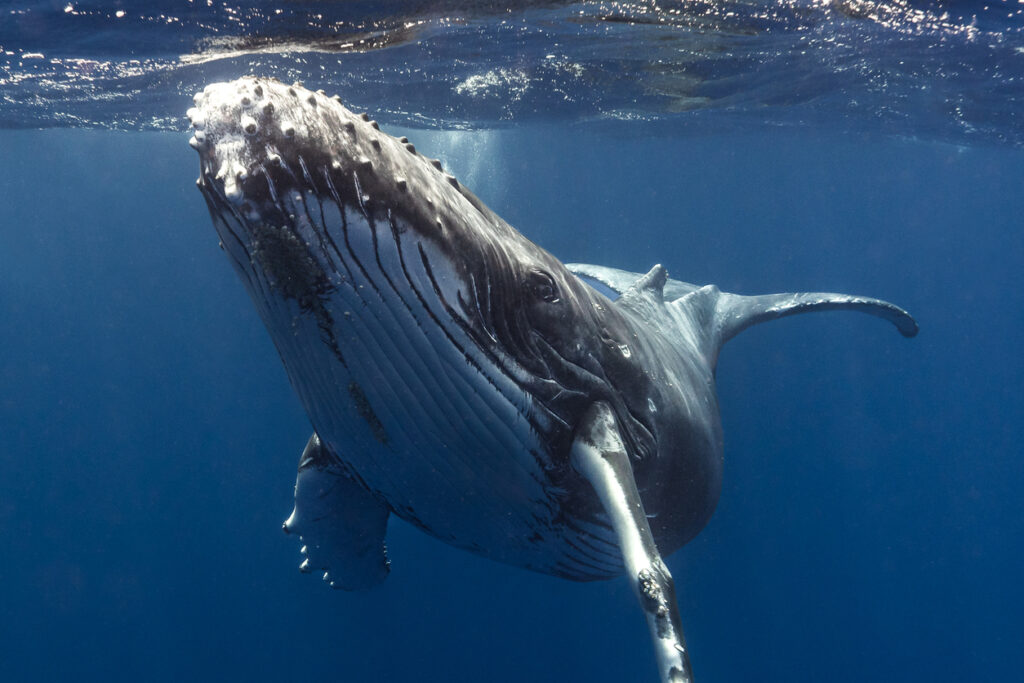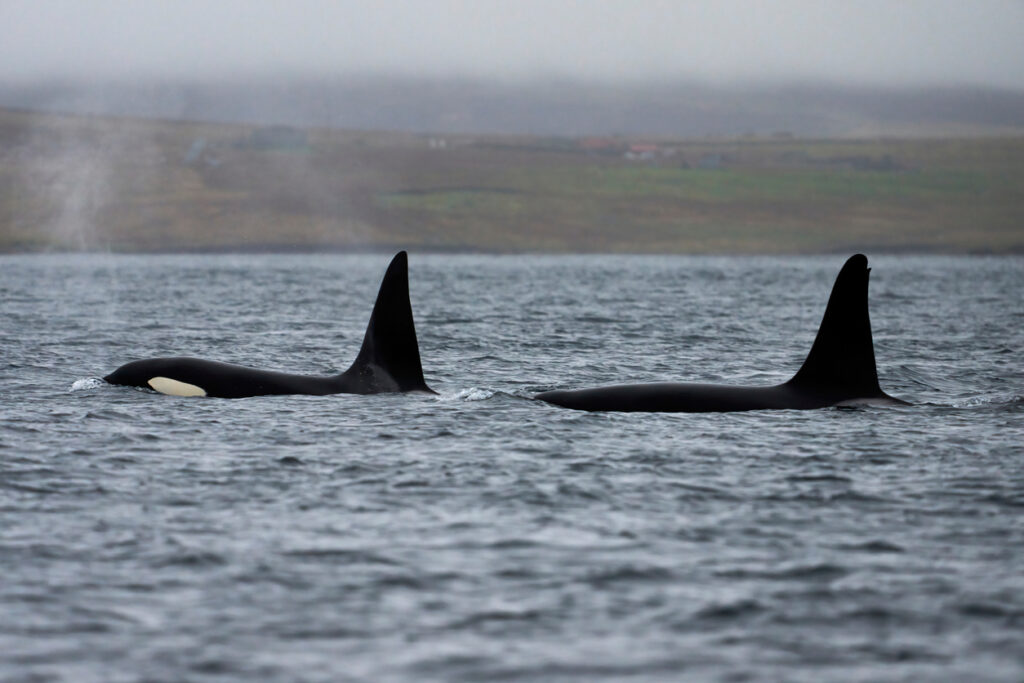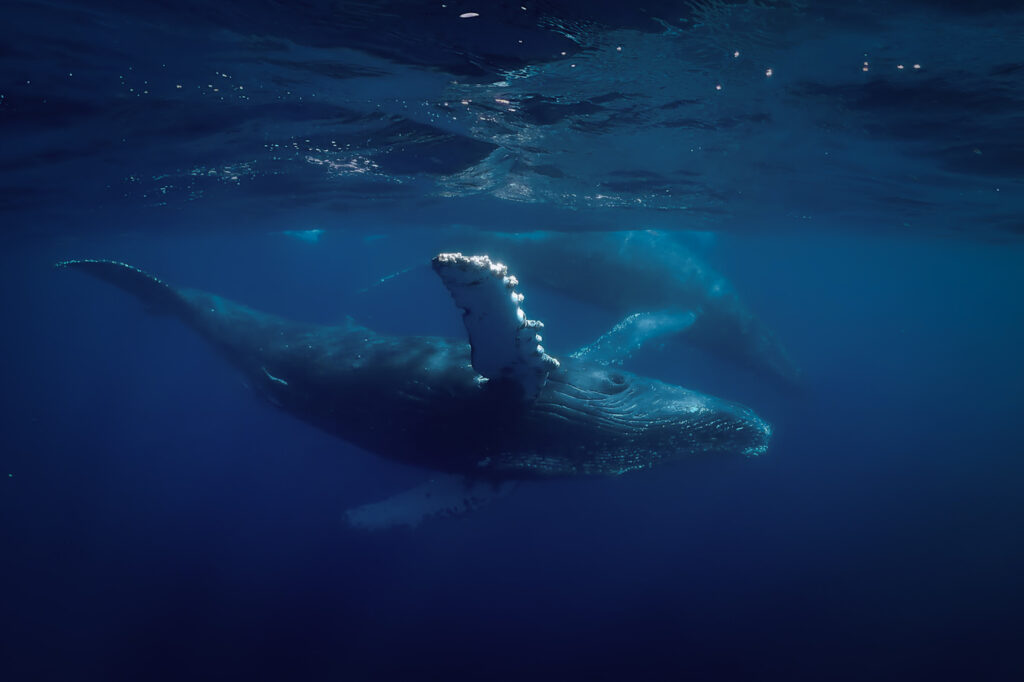The family Cetacea is home to aquatic mammals, including dolphins, porpoises and also whales. They spend all of their time in water, and there are about 90 species of them in total!
Right here in Scotland you might even get the chance to see some of these incredible animals in person, with a few species being found in the waters around the Scottish coast.
In this blog, we’ll be focusing on the fascinating world of whales, giving you all the information you need to know about these fascinating creatures – and where you might be able to spot them for yourself!
What are whales?
Whales are the biggest animals in the world, and you can find them in every ocean, including the North Sea which connects to the Atlantic Ocean.. They are mammals, which mean they give birth to live young, much like we do. There’s a diverse range of whales out there, some measuring incredibly large while others are much smaller, and each have their own characteristics which we’ll come to learn more about.
The first whales appeared around 50 million years ago, which makes them younger than the dinosaurs, but much older than us!
Types of whales
Whales are divided in two groups: toothed whales and baleen whales. The main difference between the two is their teeth, or lack of.
Toothed whales (Odontoceti), as you may guess, have teeth that they use in order to hunt and eat their prey. Some of the most well-known toothed whales include sperm whales, beluga whales and narwhal.
Baleen whales (Mysticeti), on the other hand, have fringed plates in their mouths made from material called baleen. They use this to strain and filter smaller creatures. Some of the most recognised baleen whales include the blue whale and humpback whale. Typically, baleen whales are bigger than their toothed counterparts.

Top tips for whale spotting in Scotland
Whale watching is an incredible hobby that you can do right here in Scotland! Scotland is renowned for being one of the best places in the world to spot whales – so long as you time it right.
You can find up to 20 different species of cetaceans in the waters of Scotland, but some of the most common include the bottlenose dolphin, harbour porpoise, minke whale and orca.
The minke whale (Balaenoptera acutorostrata) is a small type of a baleen whale, typically growing to around 8-9 metres in length. You can recognise a northern minke whale by the white armbands around their flippers. These creatures have been a victim of the whaling industry, particularly in Norway. They are commonly seen around Scotland between July and September, in the Moray Firth.
The orca (Orcinus orca) is a toothed whale, easily recognisable thanks to their black and white colouring. They can be seen across the north and west coasts of Scotland, in particular across Shetland and Orkney year-round. Their pod sizes are usually quite small, so you’ll have to have a keen eye!

If you’re hoping to spot the minke whale or orcas on your next trip to Scotland, it’s important to keep in mind the Scottish Marine Wildlife Watching Code. This is a guide to help you both enjoy watching marine wildlife while also minimising disturbance.
Remember that whales, dolphins and porpoises in Scotland are classed as European protected species, which means it’s an offence to deliberately or recklessly capture, injure, harass or disturb the animal.
What sounds do whales make?
Whales are known for producing fascinating noises and sounds, which can be heard for miles when underwater. These calls are thought to be how whales communicate, and are made up of noises like moans, howls and cries.
It’s an incredibly clever process, with the whales pushing air around their heads, which is then amplifying through an area of fat on their upper jaw. A recent scientific discovery has found that baleen whales have evolved a type of voice box that helps them make these noises. Research showed that the whales’ larynxes allows them to sing by recycling the air.
Toothed whales produce sound by blowing air through an area of their nasal passage; something that is better understood.
What do whales eat?
Not all whales have the same diet, with it differing between species. In some cases they also eat different amounts – the humpback whale, for example, doesn’t eat for half the year, as it lives off its fat reserves while migrating.
The blue whale, which is the largest species, has a surprisingly simple diet and eats almost exclusively krill. These are small shrimp that swim in huge groups. They feed by taking in big mouthfuls of both water and food, letting the baleen plates filter the water back out. In Scotland, the minke whale will typically move inshore to feed, where fish are more abundant. The waters around the Hebrides see a seasonal population of minke, as they return to the area as a source of food.
Toothed whales typically eat squid and other fish, such as herring. The orca will also have a broader diet that includes seals and sea lions. In Shetland Orkney, orcas may be seen feeding on seals, hunting in coordinated attacks.
How whales catch their food also varies between species. The humpback will lunge forward with its mouth open, while other toothed whale species will suck prey into its mouth or grab and bite it.

How long do whales live?
The lifespan of a whale can depend greatly on a number of factors, including its species. On average a whale could live for 20-100 years, which is quite a range! The orca is thought to live for around 30-40 years, while the bowhead whale has been known to live up to 200 years!
It’s thought that sperm whales have a lifespan of around 60-80 years, while the blue whale can live for around 90 years. Fascinatingly, you can tell how old a blue whale is by looking at its ear wax! Their wax alternates in layers to show when the whale was in migrating or feeding periods.
Additional whale facts
Whales are truly fascinating creatures, and there’s so much to learn. Here are just some extra facts for you to know:
- Some whales use bubble netting to feed: This means that whales will blow bubbles that encircle their prey.
- Killer whales are actually dolphins: Orcas, also called killer whales, are the largest members of the dolphin family.
- Hippos are the closest relative of whales: The hippo is actually a close cousin of the whale.
- Humpback tails are like our fingerprints: Their tails are incredibly unique, and scientists can identify them by the markings on the underside.
- Whales have the longest migration of any mammal: Lots of species migrate between warm water to breed and cold water to feed. The likes of humpback and gray whales travel between the tropics and polar seas.
With such a diverse array of whales out there, it’s an incredible family of aquatic mammals! To see more of the ocean’s sea creatures up close and personal, book your tickets to Deep Sea World today.
